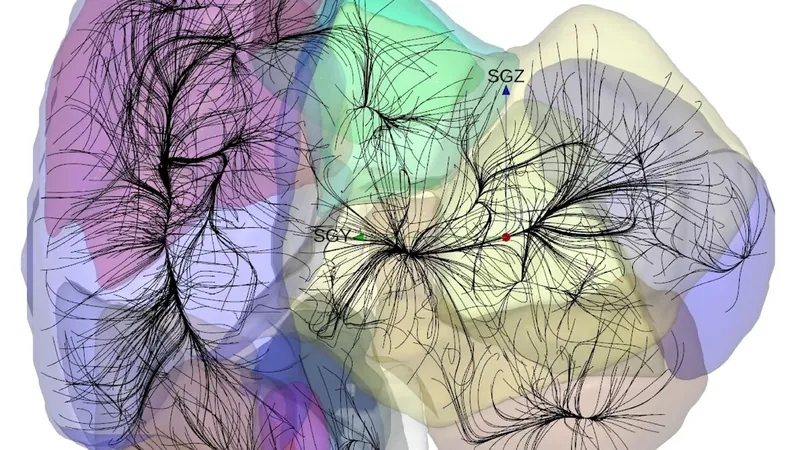
Is Our Galaxy Just a Tiny Piece of a Truly Massive Cosmic Web?
2025-07-19
Author: Ming
As we peel back the layers of the universe, we're discovering that our cosmic neighborhood is just a tiny fragment of a mind-bogglingly vast structure shaped by the dance of gravity.
From orbiting the Sun to being part of the Milky Way, which itself is embedded in the Local Group of galaxies—including the famous Andromeda—our celestial home is connected to a larger tapestry of cosmic wonders.
But wait—there’s more! The Local Group doesn’t float in isolation; it’s perched on the outskirts of the expansive Virgo Supercluster, which is part of an even larger region known as Laniakea. A groundbreaking study indicates that Laniakea may lie within an enormous ‘basin of attraction’ (BoA) that could be up to ten times larger than previously imagined.
As the research team posits, "The entire Universe is akin to a patchwork of BoAs, similar to how the landscape is divided into watersheds." These BoAs aren’t gravitationally bound, meaning their vast distances are predominantly determined by the expanding universe rather than gravitational pulls.
Through an ambitious examination of the movements of over 56,000 galaxies, astronomers aimed to create a 'probabilistic map' of our local universe, helping to define the contours of these immense basins.
R. Brent Tully, an astronomer at the University of Hawai'i at Manoa, elaborated that "Our universe resembles a colossal web, with galaxies strung along filaments and clustering at nodes where gravitational forces converge. Just as rivers flow within watersheds, galaxies stream through cosmic basins of attraction. The discovery of these expansive structures could revolutionize our understanding of cosmic architecture."
The researchers ran simulations that revealed these BoAs encompass numerous immense formations, including the enigmatic Great Attractor.
Surprisingly, they identified a BoA around the obscured Ophiuchus cluster, hidden behind the heart of our Milky Way. This BoA might even include the Great Attractor region along with Laniakea itself, revealing a cosmic landscape dominated by structures like the monumental Sloan Great Wall.
Creating these cosmic maps is a complex endeavor, with challenges in tracking how galaxies influence each other. Due to this complexity, many uncertainties arise. Their simulations, however, suggest there’s a 60% probability that our Milky Way is not in Laniakea but rather in a different structure called the Shapley concentration.
Beyond the quest for our galactic address, these findings hold profound implications for our understanding of the universe. The colossal structures discovered challenge established models, suggesting that the cosmos appears more interconnected and extensive than previously thought.
As Noam Libeskind, an astronomer at the Leibniz Institute for Astrophysics Potsdam, remarks, "It’s not surprising that the further we look into the cosmos, the more we discover that our supercluster is more vast and interconnected than we ever imagined. The possibility of us being part of something significantly larger is exhilarating, although further observations are necessary to validate the dimensions of our home supercluster."
This study, recently published in Nature Astronomy, paves the way for even deeper explorations of our cosmic environment!




 Brasil (PT)
Brasil (PT)
 Canada (EN)
Canada (EN)
 Chile (ES)
Chile (ES)
 Česko (CS)
Česko (CS)
 대한민국 (KO)
대한민국 (KO)
 España (ES)
España (ES)
 France (FR)
France (FR)
 Hong Kong (EN)
Hong Kong (EN)
 Italia (IT)
Italia (IT)
 日本 (JA)
日本 (JA)
 Magyarország (HU)
Magyarország (HU)
 Norge (NO)
Norge (NO)
 Polska (PL)
Polska (PL)
 Schweiz (DE)
Schweiz (DE)
 Singapore (EN)
Singapore (EN)
 Sverige (SV)
Sverige (SV)
 Suomi (FI)
Suomi (FI)
 Türkiye (TR)
Türkiye (TR)
 الإمارات العربية المتحدة (AR)
الإمارات العربية المتحدة (AR)